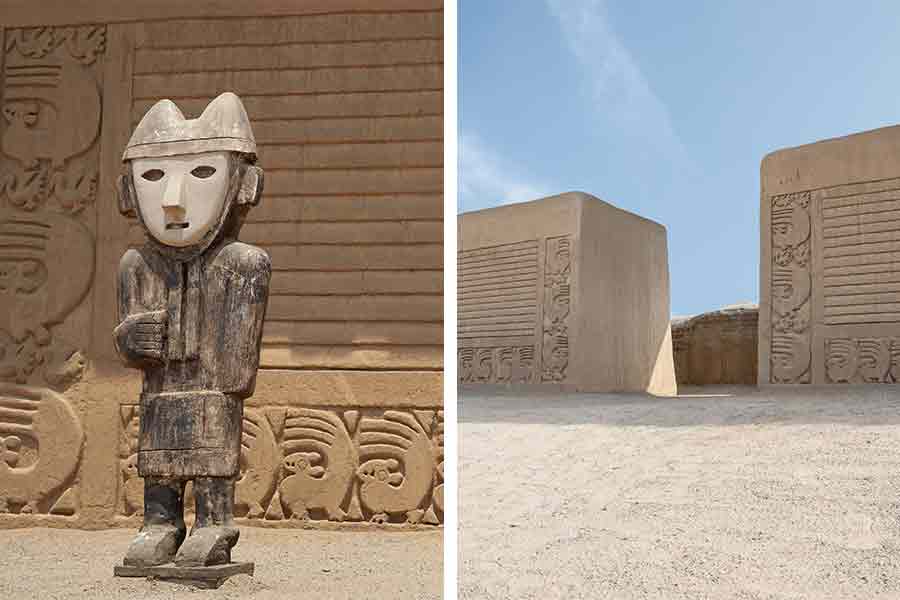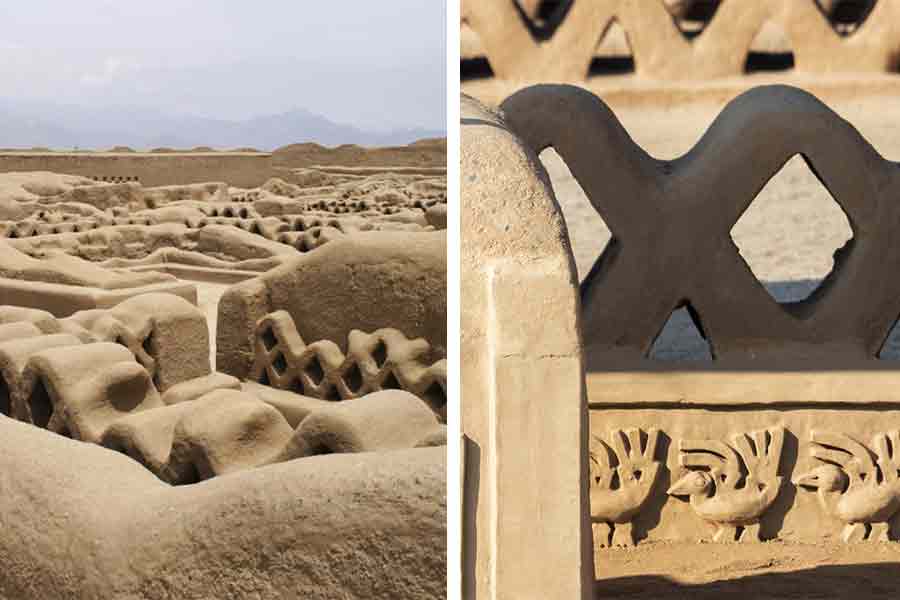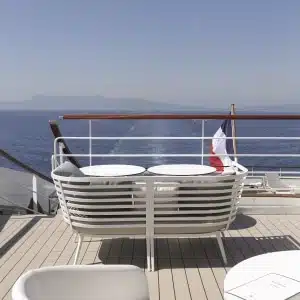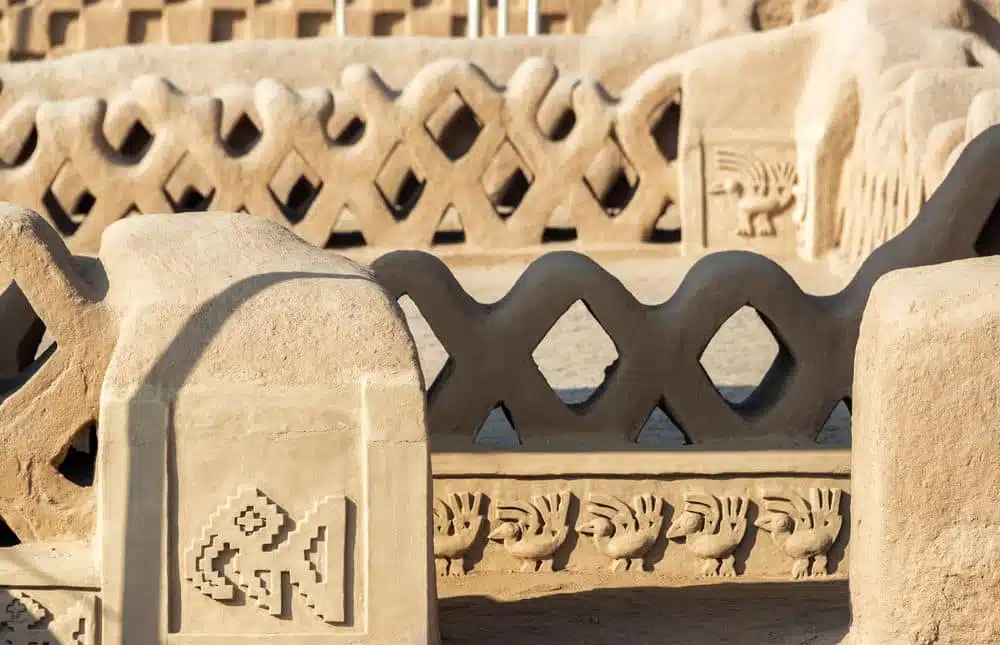Travel back to pre-Columbian times
In northern Peru, not far from the city of Trujillo, stands one of the most incredible examples of pre-Columbian remains that South America has to offer: the archaeological site of Chan Chan. Everything at Chan Chan reflects the forgotten reign of a particularly sophisticated people: set off to discover the Chimú.
Before the Incas
The Chimú people were defeated by the rise, then domination, of the Inca civilisation in this part of the world. And visiting Chan Chan means reconnecting with Chimú culture, missing from the chapters of pre-Columbian history. Incidentally, Chan Chan was the birthplace and capital of the Kingdom of Chimor– the subjects of which were the Chimú. The city had some 30,000 inhabitants at the height of its glory. Made of earth, it sprung up between 850 and 1470 AD. All the kingdom’s administrative buildings were found within Chan Chan’s 20 km2.
The conquistadors’ legacy
Surprisingly, the memory of these people survived thanks to the conquistadors’ invasion. Why? Around 1470 AD, a certain Tupac (Inca Yupanqui, not Shakur) conquered the city and wiped out its inhabitants. When the Spanish arrived on Inca soil 50 years later, the memory of the Chimú people was still alive. The invaders collected traces and evidence of this civilisation, without which it might have disappeared into the limbo of oral history.

Highly coded urban planning
Organised according to strict hierarchical rules, the city of Chan Chan was an unbounded maze. The nature of the buildings appeared to want to map the social organisation of the time. Kings resided in what are thought to be palaces (cuidadelas), non-noble aristocrats in intermediate buildings, the middle classes in workshops – superb examples of which remain to this day. Finally, commoners lived in the most cramped dwellings, which betray a certain continuity in their disordered jumble. Each neighbourhood, even each house, demonstrates the extent to which the Chimú were governed by complex social interactions and circumstances, evidence of a highly civilised society.
A vulnerable colossus
The archaeological city has suffered damage at the hands of El Niño, as well as other extreme weather events. This is why the Peruvian government has carried out conservation work to protect this incredible piece of pre-Columbian cultural heritage from deterioration.
Wall-to-wall history
Between the palaces and the modest dwellings, the entire city was united around its beliefs, whether in the temples or the audiencias, sort of U-shaped urban spaces that could serve as a forum as well as a theatre. Chimú culture is reflected in these buildings with their richly decorated adobe walls featuring incredible decorations with a mix of geometric and figurative images.

City of sea gods
Chan Chan was home to a civilisation that was generally animist, with cults particularly dedicated to creatures and deities related to the sea. And for good reason, its coastal location made the Kingdom of Chimor a land that lived by the ocean. It owed much of its abundance to the Pacific and repaid it by decorating the walls of its city state with fish, pelicans and all things fishing-related. Chan Chan is still famous for these wall decorations today.
In Peru’s sprawling eternal city, Chan Chan’s earth walls tell us the fascinating story of pre-Columbian civilisations…

PONANT takes you there
Explore the incredible site of Chan Chan from your stopover in Salaverry.



